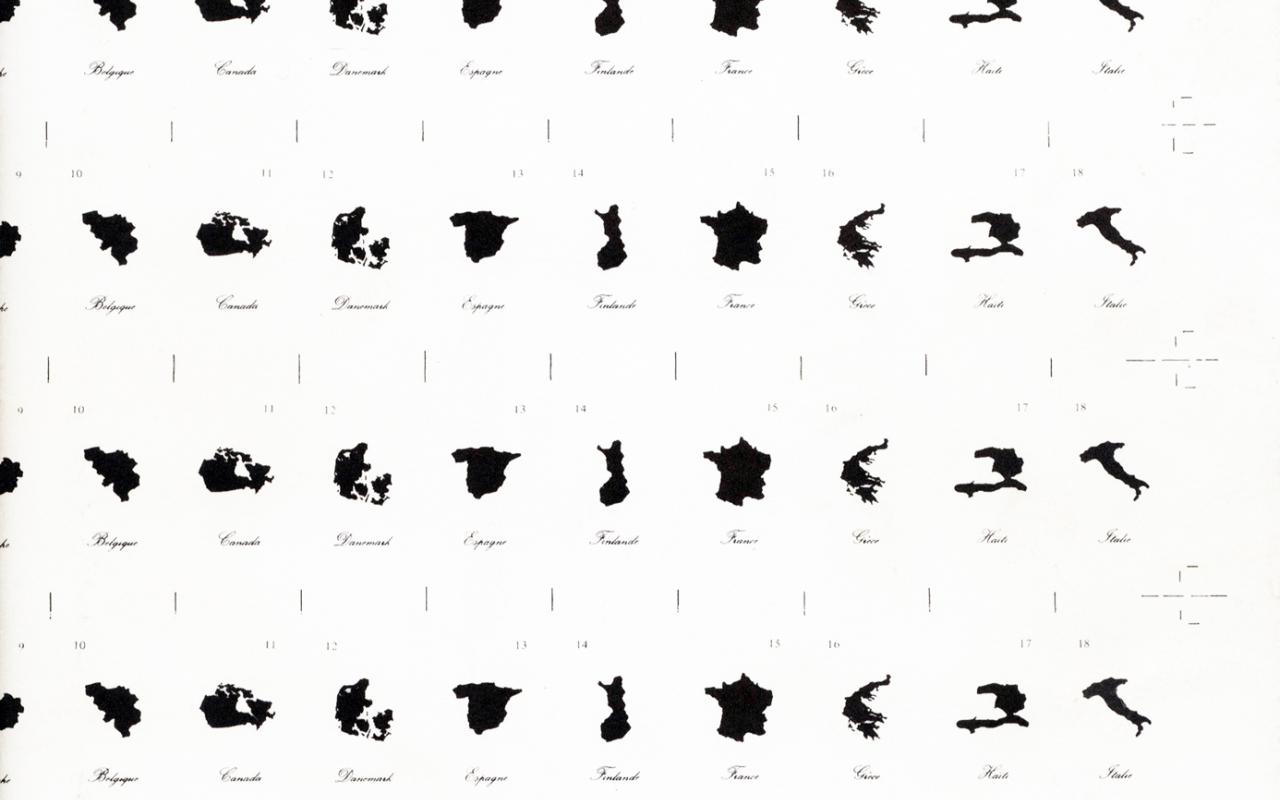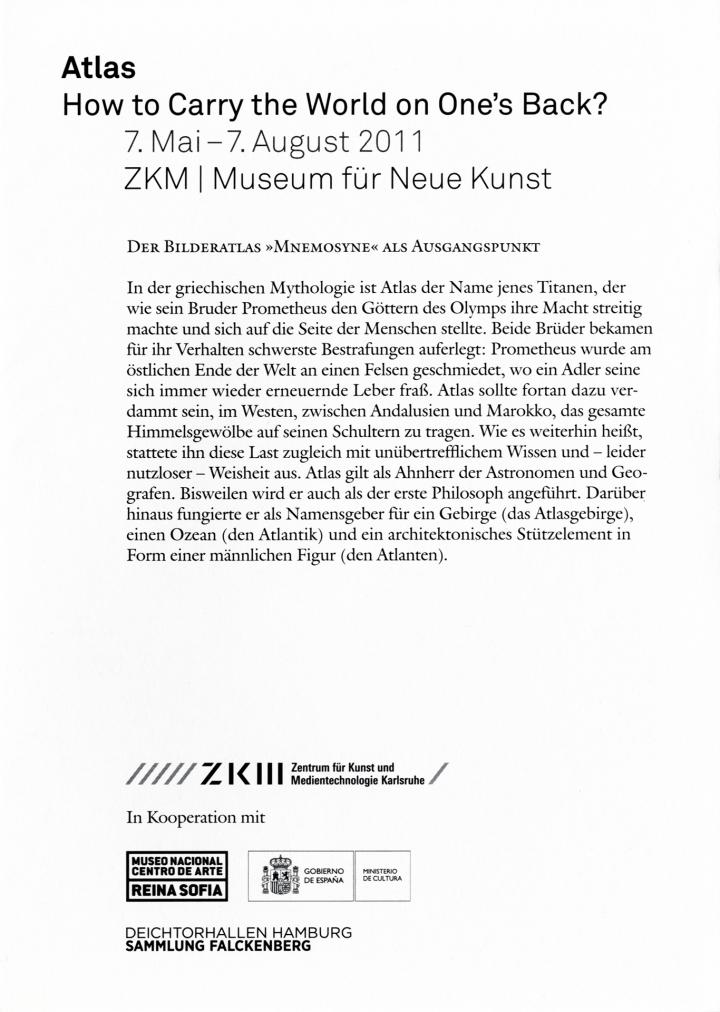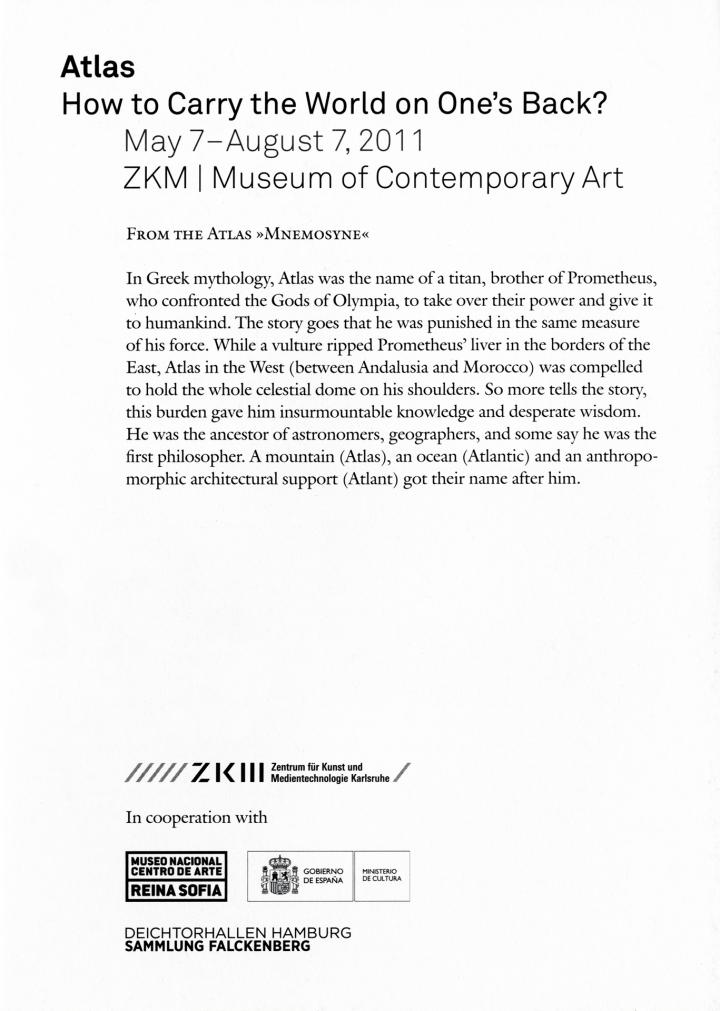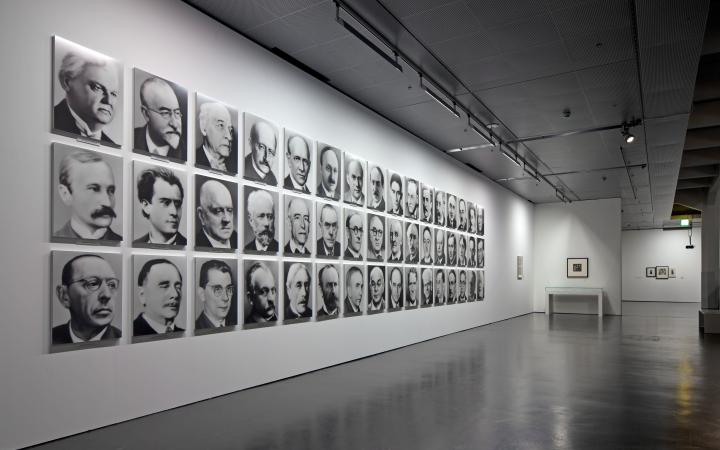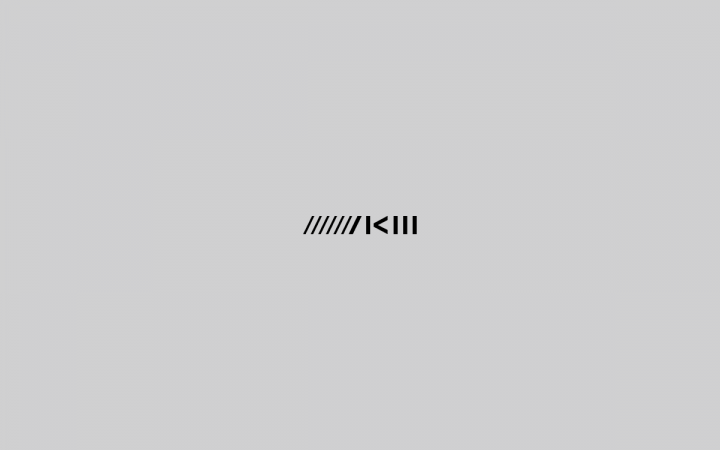Atlas. How To Carry The World On One’s Back?
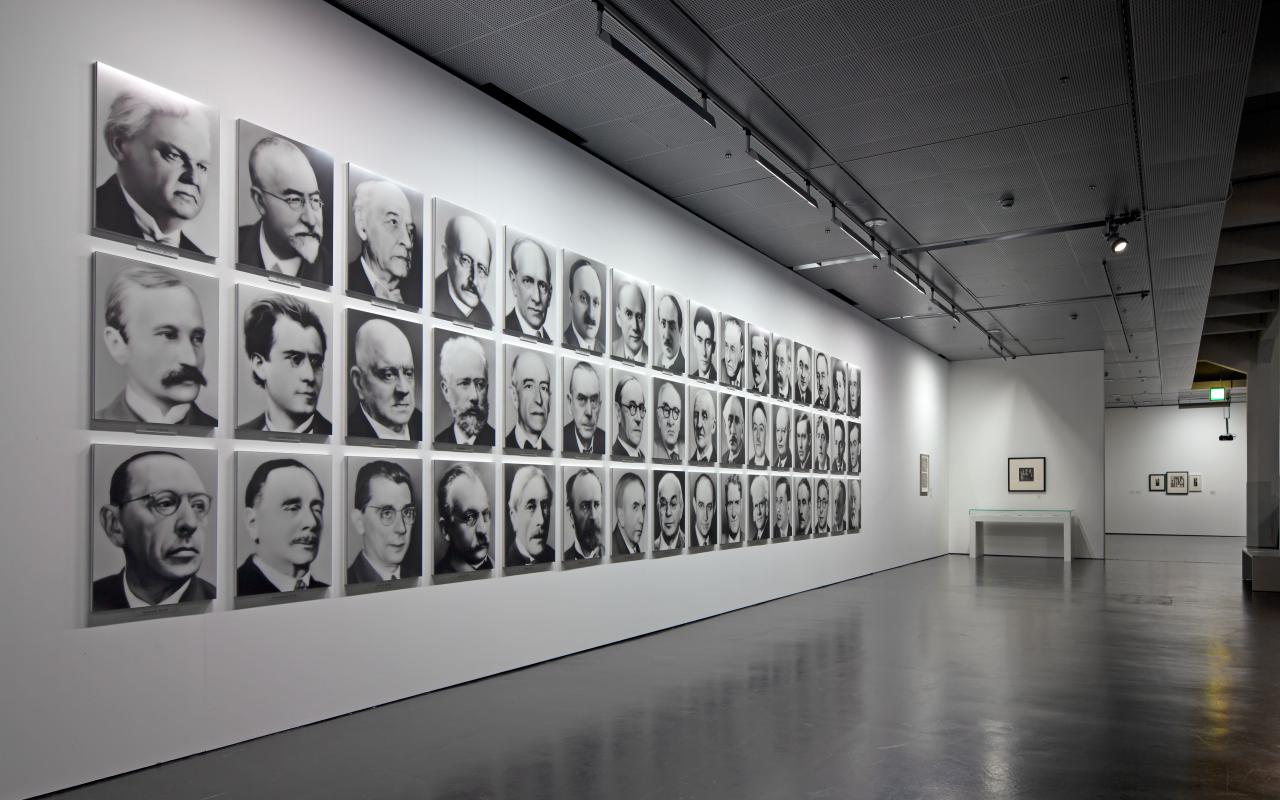
Sat, May 07, 2011 – Sun, August 07, 2011
In what way do certain artists work, and how do they develop their ideas? The ZKM | Museum of Contemporary Art shows an interdisciplinary exhibition which, commencing with Aby Warburg’s illustrated atlas »Mnemosyne«, covers a period extending from the early years of the 20th century through to the 21st century. The focus of the exhibition falls less on the completed work as such, than the work surfaces and inspirational sources that disclose the creative processes.
The exhibition addresses the question as to the ways in which the work of the artist is to be interpreted in terms of representing an authentic method. How is it possible to observe the world without following the standard of our knowledge? In keeping with the formulation of this question, the concept behind »Atlas« is not directed at collecting »master pieces«: the task of foremost interest is the discovery of sources on which artists have drawn, and which thus make the diverse artistic procedures comprehensible. Thus, it is not Paul Klee’s water colors that are exhibited but, among others, his modest herbarium and the graphical and theoretical ideas which it inspired; it is not Josef Albers' squares that are presented, but his photograph album of pictures of pre-Columbian buildings.
The »Mnemosyne« Atlas is an incomplete collection of pictures compiled between 1924 and 1929. It shows that art theorist Aby Warburg (1866-1929) apparently cultivated the same passion for visual intuition as the artists of his time. This makes him a contemporary of avant-garde artists (Kurt Schwitters, Laszlo Moholy-Nagy), of photographers, who worked in documentary style (August Sander, Karl Blossfeldt), of avant-garde filmmakers (Jean Painlevé), of writers who evolved the technique of literary montage (Benjamin Fondane), as well of Surrealist poets and artists (Georges Bataille, Man Ray).
In Greek mythology Atlas was compelled to bear the entire celestial dome on his shoulders for daring to contest the power of the Olympic gods, and to take the side of human beings; he is considered the forefather of astronomers and geographers. At the same time, the concept »Atlas« stands for visible forms of knowledge, whether this be the compilation of geographical designs of a closed cartography, or a collection of illustrations intended to exemplify an abundance of things in a systematic or problematic way.
Above all else, if it appears that the Atlas is an ongoing task of renewed composition of the world, then this is due to the fact that world itself is in a state of continual disintegration. The montage of illustrations represents a key artistic medium for tracing history as it unfolds and, finally, to dismantle it for the purposes of creating alternative models.
The exhibition addresses the question as to the ways in which the work of the artist is to be interpreted in terms of representing an authentic method. How is it possible to observe the world without following the standard of our knowledge? In keeping with the formulation of this question, the concept behind »Atlas« is not directed at collecting »master pieces«: the task of foremost interest is the discovery of sources on which artists have drawn, and which thus make the diverse artistic procedures comprehensible. Thus, it is not Paul Klee’s water colors that are exhibited but, among others, his modest herbarium and the graphical and theoretical ideas which it inspired; it is not Josef Albers' squares that are presented, but his photograph album of pictures of pre-Columbian buildings.
The »Mnemosyne« Atlas is an incomplete collection of pictures compiled between 1924 and 1929. It shows that art theorist Aby Warburg (1866-1929) apparently cultivated the same passion for visual intuition as the artists of his time. This makes him a contemporary of avant-garde artists (Kurt Schwitters, Laszlo Moholy-Nagy), of photographers, who worked in documentary style (August Sander, Karl Blossfeldt), of avant-garde filmmakers (Jean Painlevé), of writers who evolved the technique of literary montage (Benjamin Fondane), as well of Surrealist poets and artists (Georges Bataille, Man Ray).
In Greek mythology Atlas was compelled to bear the entire celestial dome on his shoulders for daring to contest the power of the Olympic gods, and to take the side of human beings; he is considered the forefather of astronomers and geographers. At the same time, the concept »Atlas« stands for visible forms of knowledge, whether this be the compilation of geographical designs of a closed cartography, or a collection of illustrations intended to exemplify an abundance of things in a systematic or problematic way.
Above all else, if it appears that the Atlas is an ongoing task of renewed composition of the world, then this is due to the fact that world itself is in a state of continual disintegration. The montage of illustrations represents a key artistic medium for tracing history as it unfolds and, finally, to dismantle it for the purposes of creating alternative models.
- Credits
- Georges Didi-Huberman (Curator)
- Exhibitions team
- Martin Häberle (technical project management)
Marianne Meister (registrar) - Organization / Institution
- ZKM | Museum für Neue Kunst
- Partners
Museo Nacional Centro de Arte Reina Sofia, Madrid ; Sammlung Falckenberg, Hamburg
- Sponsors
Ministerium für Wissenschaft, Forschung und Kunst Baden-Württemberg ; Stadt Karlsruhe
